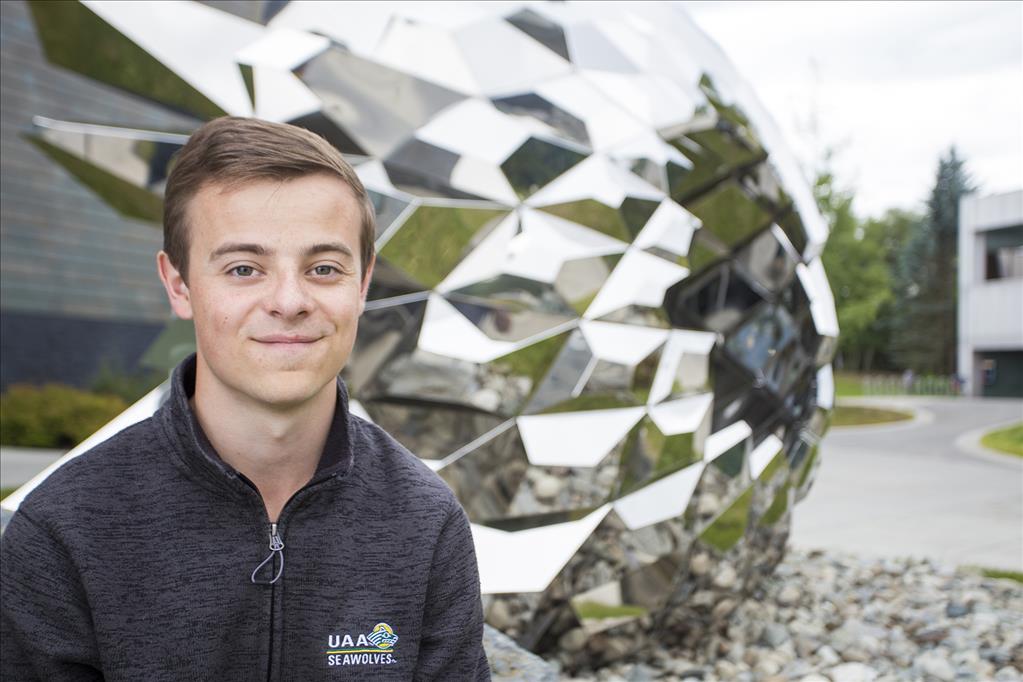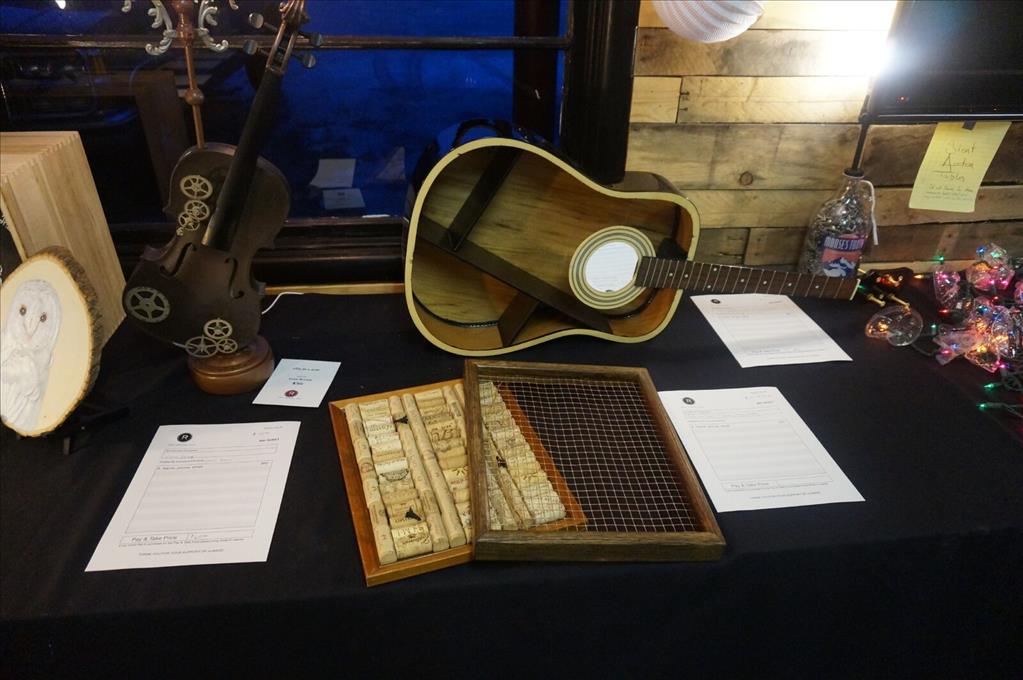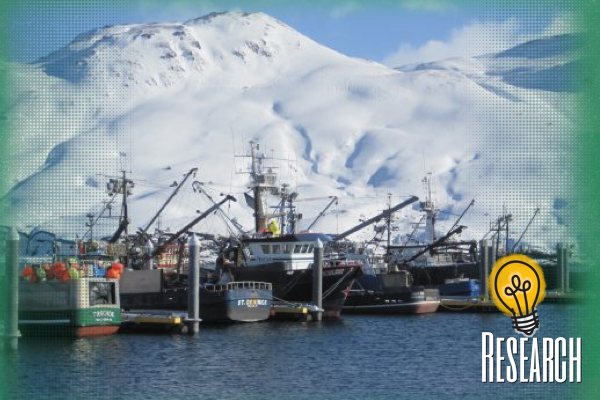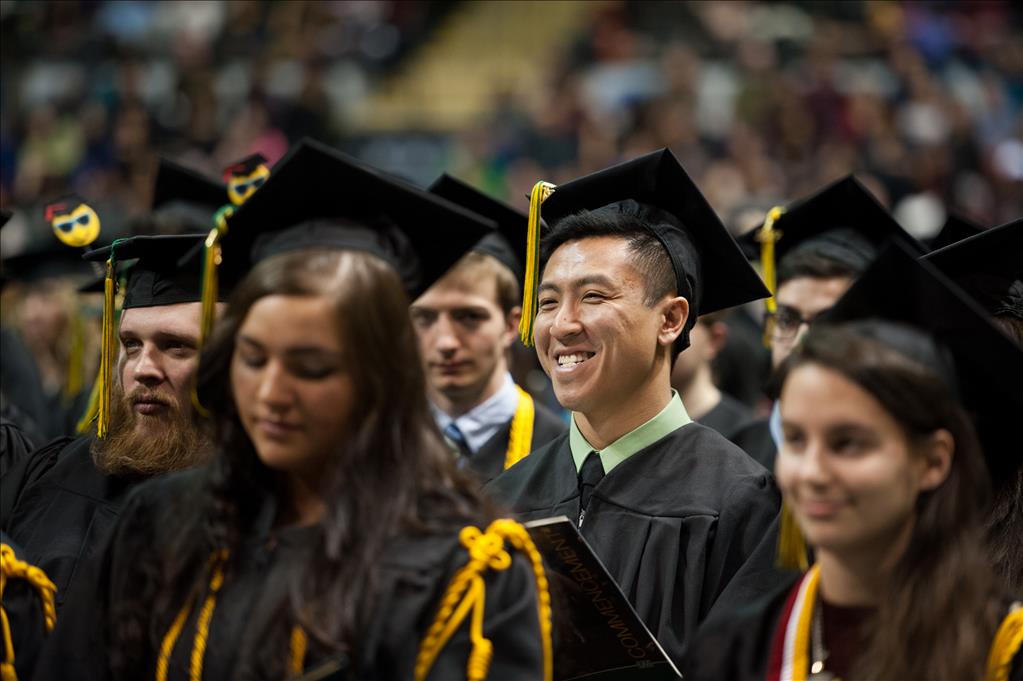Addiction, homelessness focus of UAA Think Tank talk
by Tracy Kalytiak |
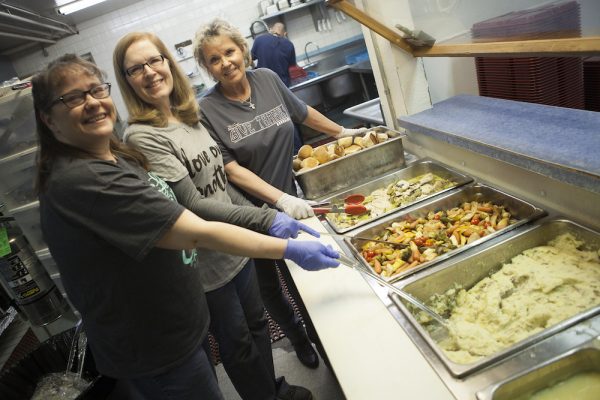
Heather Burtis, Rhonda Wright and Wanda LaCasse serve food at Anchorage Gospel Rescue Mission last week. The Mission is the guest agency at Thursday's free Think Tank session focusing on homelessness and addiction, at the UAA/APU Consortium Library Room 307. (Photo by Philip Hall / University of Alaska Anchorage)
One day, Shane Day was supposed to be working on projects at a doctor's remote homestead cabin. Instead, he was drinking-heavily.
Then, the doctor and his family arrived, their plane skimming the surface of a lake nearby, stopping. They climbed out of the plane.
"I was a drunken crackhead," Shane said. "I blacked out on them, screaming. The doctor said he wanted to talk with me. We went out to the back deck and he said, 'You're fired.'"
With that, Shane was homeless, again. He had battled addiction for three and a half decades when he first walked into Anchorage Gospel Rescue Mission and started participating in its faith-based recovery program.
Twelve years later, Shane is clean, happily married and works as facilities manager for the Mission.
"I recommitted my life to Christ and I've been blessed ever since," he said. "The Lord heals a particular person of whatever past hurt has affected the present time, because the root issue [of addiction] is usually back somewhere in your childhood. That's when a lie got implanted into your life, and false belief systems have been built around that."
Brainstorming new approaches
Faith was the key to helping Shane conquer his addiction. It works for others as well. However, many addicts aren't as fortunate. They try and fail-or don't try-to overcome addiction, homelessness, mental illness. You can see them every day in Anchorage-holding signs on street corners, stumbling and weaving through traffic, wandering across parking lots.
UAA's Center for Community Engagement and Learning is sponsoring a Think Tank community-brainstorming event to discuss the complex, intertwined issues of homelessness and addiction. Anchorage Gospel Rescue Mission will be the guest agency and the discussion topic will be: "How should Anchorage respond to challenging needs of those abusing alcohol/drugs? How can health care professionals best advocate for care for this population?"
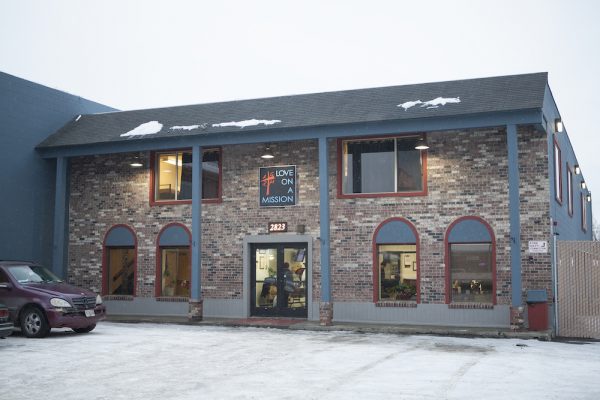
Anchorage Gospel Rescue Mission is located on the north side of Tudor Road, between Lake Otis Parkway and Elmore Road. (Photo by Philip Hall / University of Alaska Anchorage)
John LaMantia, executive director of Anchorage Gospel Rescue Mission, has been invited to attend.
The event is scheduled for 11:30 a.m.-12:45 p.m., Thursday, Feb. 2, in Room 307, UAA/APU Consortium Library. Moose's Tooth will provide pizza. The free event is open to students, faculty, staff, nonprofits and anyone from the community who wishes to listen, learn and talk about the issue.
The UAA School of Nursing is co-hosting this Think Tank. UAA faculty joining the discussion include Professor Angelia Trujillo of the UAA School of Nursing and Professor James Fitterling, UAA program director of the UAA-UAF Ph.D. Program in Clinical and Community Psychology and an AGRM board member.
Fitterling's research involves a partnership that brings adults to a healthier approach to their addiction through volunteer work (for example, with Habitat for Humanity) and contributing to the community. The Habitat for Humanity volunteers and others in the community gained valuable insights by working with people from the Mission.
"They got a chance to see there's another side to the homeless man than a guy on a street corner with a cardboard sign," Fitterling said. "A lot of times we forget to take a different kind of approach to working with people who struggle and take more of a strength-based approach. Rather than seeing a person with a pathology and disease process, you see an individual who has hopes, promises, skills, aspirations and virtues. It was healing for everybody."
Now, the partnership between the Mission and UAA is focused on developing an interdisciplinary training program, whereby students in psychology, social work, nursing and family medicine prove psychosocial and medical care for some of the most clinically challenging, needy and stigmatized people in the community.
Breaking the cycle
Anchorage Gospel Rescue Mission serves meals, offers clothing and can provide nighttime sanctuary for up to 62 homeless men and eight women (the Mission refers to those men and women as "clients") and 30 "programmers"-men participating in the Mission's 18-month in-house drug-treatment program.
"They come from all walks of life," Shane said. "We have a lady upstairs with a master's degree."
The women may stay for up to seven months.
"Our goal is for them to find employment, then move into permanent housing so they break the cycle," Shane said. "We found when they were here a month at a time just like the men are allowed, it wasn't enough time for them to get anything going and they'd just cycle back through. Once we established the seven-month criteria, at least five women have moved into permanent housing."
Mission guests awaken at 6 a.m. There is no dayroom, so men leave at 7 a.m.; women must leave by 9 a.m. During the day, the guests have to work or spend their time out of the building, a renovated 1970s Tudor Road structure located east of Lake Otis Parkway. Adjustments are made to that schedule when weather conditions are especially cold or dangerous in some way.
Programmers must submit to breath and urine tests to be able to stay; another requirement: to stay the night, they must attend chapel. Men in the program are the Mission's workforce, keeping the building clean.
"That work teaches them responsibility," Shane said.
Between 450-480 people a month get apparel from the Mission's clothing room.
The Mission originally operated downtown, helmed by Brother Don Bettis. Its current home was purchased in 1997.
"This building here used to be a Tupperware building," Shane said.
John Lamantia began serving as the Mission's executive director and pastor about three and a half years ago, taking the reins from Brother Don.
"Pastor John wants us to be able to get out there and help as well as bring in resources to help the people," Shane said. "He's more of a weaver."
The Mission's former director, Shane said, seemed to prefer to keep the Mission apart from the community.
When LaMantia became pastor and executive director, Shane said, that approach changed.
"It's just like breathing fresh and new on the Mission," he said. "Pastor is about reaching out to the community and letting them know we're here, involving their help-like James Fitterling coming in with [Anchorage therapist] Chris Cavanaugh, bringing in those people to help out the programmers. Since John [LaMantia] has been there, the community looks at us differently now."
Written by Tracy Kalytiak, University of Alaska Anchorage
 "Addiction, homelessness focus of UAA Think Tank talk" is licensed under a Creative Commons Attribution-NonCommercial 4.0 International License.
"Addiction, homelessness focus of UAA Think Tank talk" is licensed under a Creative Commons Attribution-NonCommercial 4.0 International License.










